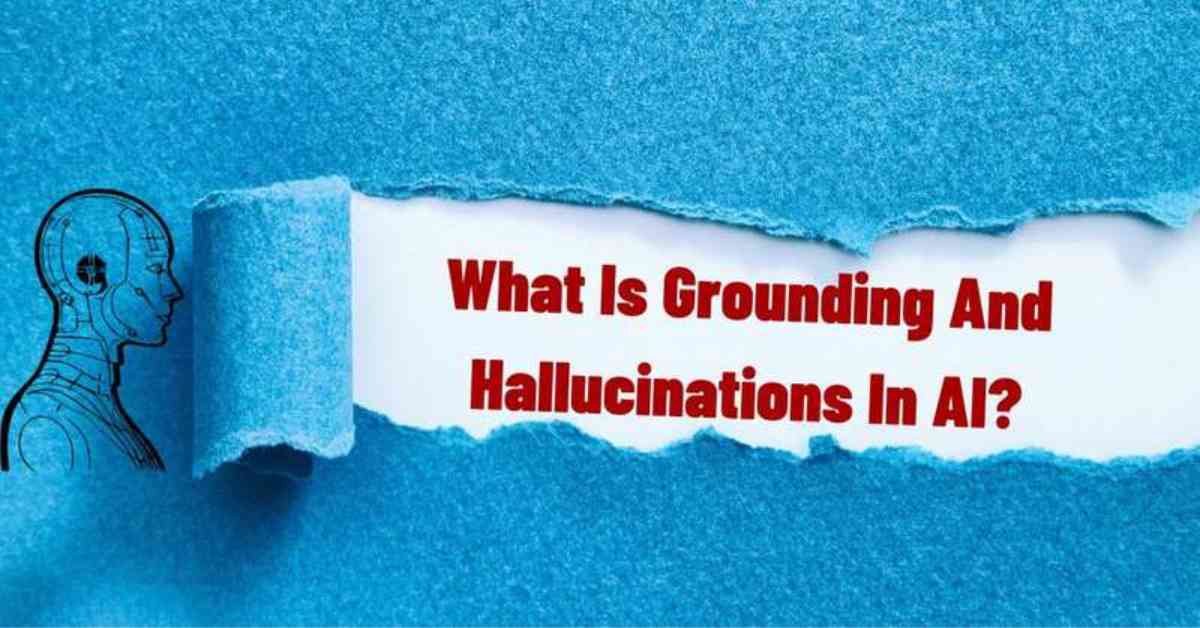Have you ever spoken to a chatbot that gave you an answer that seemed perfectly reasonable, but upon closer inspection, felt strangely off? Or perhaps you’ve used an AI image generator that produced a nonsensical image despite a clear prompt? These are both examples of a common challenge in Artificial Intelligence: hallucinations.
AI Hallucinations: Imagine a chatbot giving you wrong info, like saying Paris isn’t France’s capital. These are AI hallucinations, caused by limited data or unclear instructions.
Grounding AI: It’s like teaching AI common sense. We provide high-quality information (like training with a giant encyclopedia!) and clear goals to keep it focused and reliable.
Key-Points
Real-World Applications and Implications
Grounding and hallucinations in AI have significant implications for AI-powered products. For instance, self-driving cars require accurate grounding to interpret visual data and make informed decisions.
Hallucinations in medical diagnosis AI can lead to incorrect diagnoses and potentially harmful treatments. As AI becomes more pervasive, it’s crucial to address these issues to ensure AI systems are reliable and trustworthy.
The Relationship Between Grounding and Hallucinations
Grounding and hallucinations in AI are intimately connected. When an AI system lacks proper grounding, it’s more likely to hallucinate. Hallucinations can be mitigated by ensuring AI systems are well-grounded in their understanding of the external world.
Strategies for achieving this include using diverse and representative training data, incorporating domain knowledge, and implementing regularization techniques to prevent overfitting.
Why Grounding Matters
Imagine a doctor relying on an AI tool that hallucinates a patient’s medical history. The consequences could be disastrous! Grounding is essential for ensuring AI is reliable in various fields, from healthcare and finance to autonomous vehicles.
By addressing AI hallucinations through grounding techniques, we can pave the way for a future where AI is a trusted and valuable partner in our lives.
How Machines Learn?

Before we dive into grounding, let’s take a quick trip under the hood of AI. Unlike humans who learn through experience and intuition, AI learns by analyzing massive datasets and identifying patterns.
Imagine sifting through millions of photos of cats and dogs. Over time, the AI learns to recognize the distinct features of each animal. These patterns are then encoded into mathematical models, known as machine learning models, which allow the AI to make predictions or classifications on new data.
The Challenge of AI Hallucinations
While machine learning is impressive, it’s not perfect. Here’s why AI can sometimes hallucinate:
- Limited Data: If an AI is trained on poor quality or incomplete data, it might fill in the gaps with its own inventions, leading to hallucinations.
- Overconfidence: Some AI models become overly confident in their abilities, even when they encounter uncertain situations. This can result in fabricated information.
Grounding AI is a crucial technique to address these challenges and ensure AI interacts with the world in a reliable and trustworthy way.
How to Keep AI Reliable?

Grounding AI is a critical technique to address this challenge. Think of it as anchoring the AI’s outputs to the real world, ensuring its results are reliable. Here’s how grounding works:
Trusted Data Sources
the core of grounding is feeding the AI information from dependable sources. This could involve real-time sensor data from a self-driving car’s cameras or verified medical databases for a healthcare application. By using trusted data, AI has a solid foundation to base its decisions.
For example, a self-driving car’s AI might be grounded with real-time traffic data from road sensors, combined with high-definition maps. This ensures the AI has a clear picture of its surroundings and can make safe navigation choices.
Real-World Knowledge Integration
Grounding can also involve incorporating real-world knowledge into the AI model itself. Imagine a language translation AI being grounded with cultural nuances and colloquialisms alongside vast amounts of text data. This allows the AI to produce more accurate and natural-sounding translations.
By grounding AI with both high-quality data and real-world knowledge, we can significantly reduce the risk of hallucinations and ensure the AI operates with accuracy and reliability. This is crucial for building trust in AI and paving the way for its safe and effective use in various fields.
what is grounding and hallucinations in aI aircraft
What are Hallucinations in AI?
Have you ever used a voice assistant and gotten a nonsensical response? That’s a form of AI hallucination. In the context of aviation, hallucinations could be the AI misinterpreting sensor data, leading to incorrect readings about altitude, airspeed, or even obstacles.
Imagine an AI mistaking a flock of birds for a mechanical failure, triggering unnecessary maneuvers that could panic passengers.
Grounding AI for Safe Skies
Here’s how it works in aircraft:
- Real-time Data: Grounding can involve feeding the AI real-time data from multiple sensors, ensuring a holistic view of the flight environment.
- Trusted Sources: Grounding can also rely on pre-loaded databases of terrain, weather patterns, and flight regulations, providing a reliable reference point for the AI’s decision-making.
By grounding AI, we can significantly reduce the risk of hallucinations and ensure smoother, safer autonomous flights.
The Road to Trustworthy AI Skies
Researchers are constantly working on:
- Advanced Algorithms: Developing more sophisticated AI algorithms that can better handle complex situations and unexpected scenarios.
- Explainable AI: Creating AI systems that can explain their reasoning behind decisions, allowing for human oversight and intervention if needed.
The dream of autonomous aircraft has the potential to revolutionize air travel. By addressing challenges like AI hallucinations through grounding techniques, we can move closer to a future where autonomous flights are not just possible, but reliable and trustworthy.
The Future of Grounded AI
The field of AI is constantly evolving, and researchers are working on:
- Advanced Algorithms: Developing AI that can handle complex situations and unexpected scenarios with more accuracy.
- Explainable AI: Creating AI that can explain its reasoning, allowing humans to understand how it arrives at decisions.
By addressing AI hallucinations through grounding techniques, we can pave the way for a future where AI is a trusted and valuable partner in our lives.
Conclusion
Grounding and hallucinations in AI raise intriguing questions about the nature of intelligence, both artificial and human. Do hallucinations stem from limitations in our data or reflect a fundamental disconnect between perception and reality? As we ground AI, perhaps we’ll gain a deeper understanding of our own minds as well.
Let’s discuss! Share your thoughts on AI hallucinations and their philosophical implications in the comments.
1. What are hallucinations in artificial intelligence?
Imagine a situation where you ask your AI assistant a question, and it delivers a fabricated answer despite appearing convincing. Those are essentially AI hallucinations. These occur when AI systems generate incorrect or misleading outputs.
2. Why does GPT 4 hallucinate?
GPT-4, a large language model, can hallucinate for a few reasons. One reason is insufficient training data. If GPT-4 is trained on limited or unrepresentative data, it might create patterns that don’t exist, leading to hallucinations. Another reason is biases in the training data itself. Biases can skew GPT-4’s perception, causing it to generate outputs that reflect those biases. Finally, overfitting, where GPT-4 memorizes training data too precisely, can also lead to hallucinations when encountering new information.
3. What is an example of a hallucination in GPT?
Let’s say you ask GPT-4 to write a poem about cats. It might generate a creative poem filled with fantastical elements like cats wearing hats or flying on spaceships. While imaginative, these elements wouldn’t be factually accurate, highlighting a potential hallucination.
4. How do I stop AI from hallucinating?
Researchers are constantly working on methods to reduce AI hallucinations. Here are some approaches:
Using more comprehensive training data: Exposing AI to diverse data helps it generalize better and avoid hallucinations.
Debiasing training data: Techniques are being developed to identify and remove biases from training data.
Developing robust AI architectures: New AI models are being designed to be more resistant to hallucinations.
5. What do hallucinations represent?
AI hallucinations highlight the limitations of current AI models. They expose the challenges of ensuring AI makes reliable and accurate predictions, especially when dealing with limited or biased data.
6. What do hallucinations represent?
AI hallucinations can be seen as a signal for improvement. They indicate areas where AI training data or algorithms need to be refined to generate more trustworthy and accurate outputs.

I like this blog very much, Its a real nice
place to read and incur info.Raise range